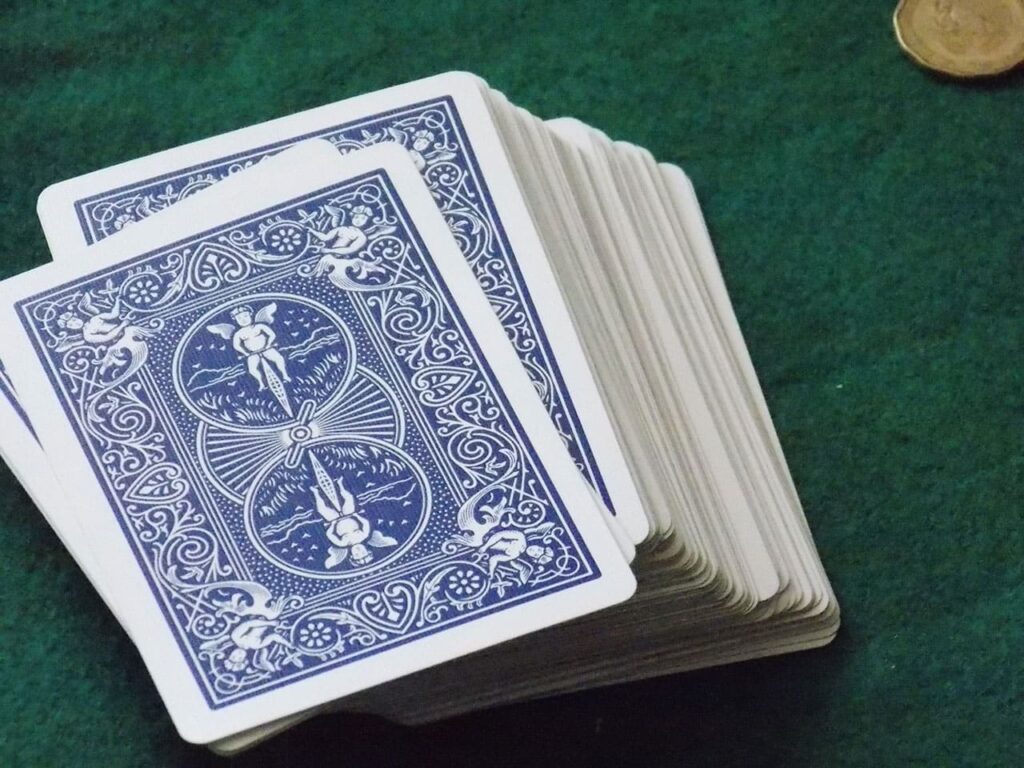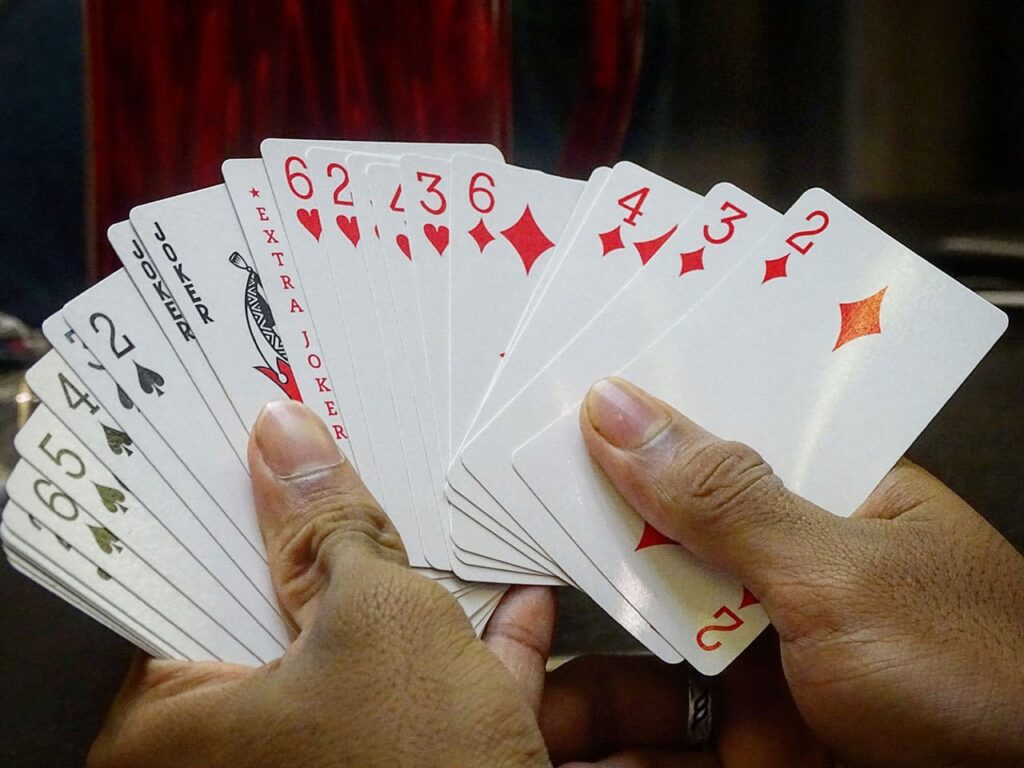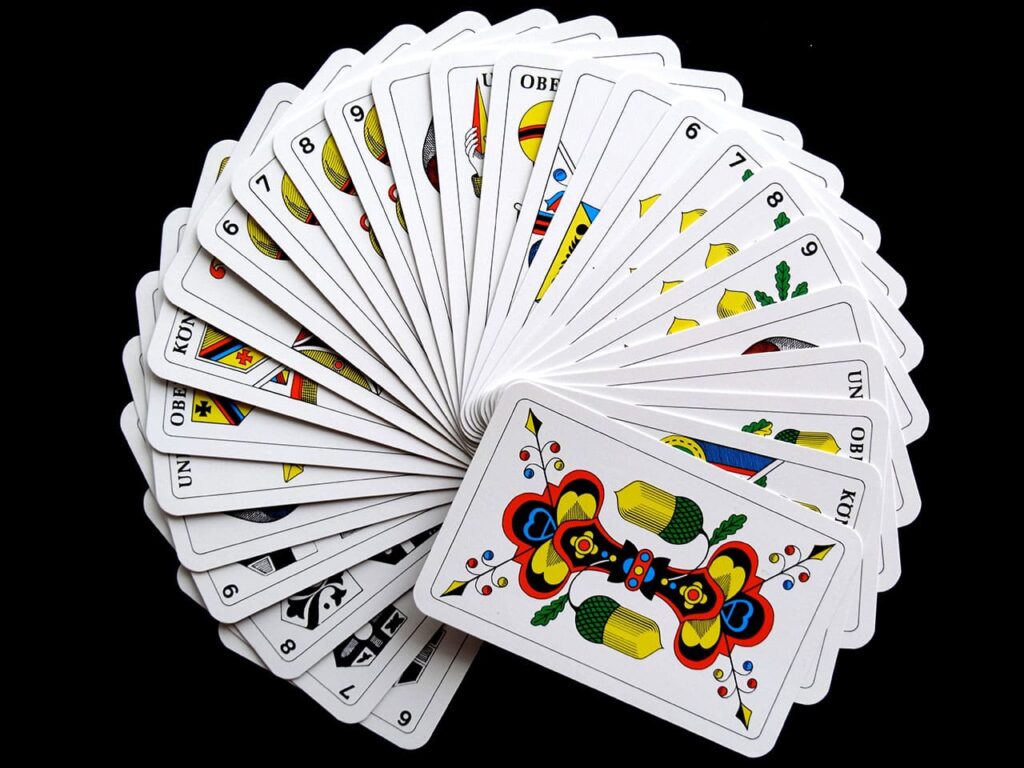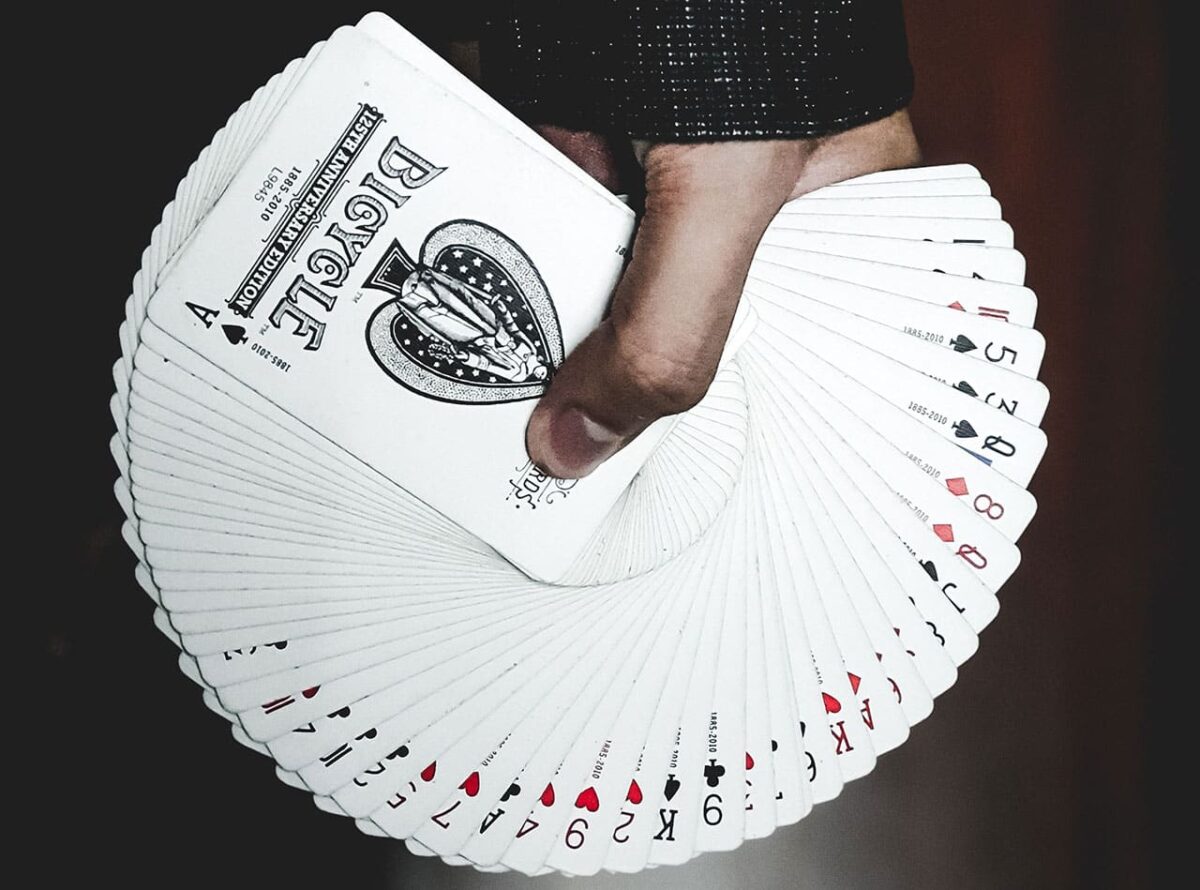Playing cards. Pretty simple, right? You probably don’t spend a lot of time thinking about the history and art of playing cards, but both aspects are deeply interesting.
A Short History of Playing Cards
Playing cards have a long and storied history that can be traced back to ancient civilizations. The earliest known playing cards date back to 9th-century China, where they were used for a game called “the leaf game.” These early cards were made from paper and were used for divination and gambling.
From China, the use of playing cards spread to India and Persia, where they were used for similar purposes. The cards used in India and Persia were made from a type of leaf, and featured the four suits we still use today: swords, cups, coins, and polo sticks.
The game of cards then spread to Islamic countries, where it evolved and became more complex. It was during this time that the suits of swords, cups, coins, and polo sticks were replaced with the suits of swords, cups, coins, and sticks.
Playing cards eventually made their way to Europe in the late 14th century. It was in Europe that the modern deck of playing cards, consisting of four suits (hearts, diamonds, clubs, and spades) and thirteen cards in each suit, was developed. These new European cards also featured the addition of face cards, such as the King, Queen, and Jack.
Over the centuries, playing cards have been used for a wide variety of purposes, from gambling and divination to education and entertainment. Today, playing cards are still widely used for games and entertainment, and have become an integral part of many cultures around the world. With the rise of online and crypto gaming, digital versions of playing cards have begun to replace the physical editions.
Playing cards have also been used for more serious matters. During World War II, for example, American soldiers used playing cards to pass the time and to escape the stresses of war. The US military also produced special decks of cards that included maps and other information that could be used for escape and evasion.
In conclusion, playing cards have a long and rich history that has been shaped by various cultures and civilizations. From their origins in ancient China to their current use for games and entertainment, playing cards have played an important role in human history.
The Art of Playing Cards
Playing cards have long been more than just a tool for games and gambling. They have also served as a canvas for some of the most beautiful and intricate art in human history.
The earliest known playing cards were plain and functional, but as the game of cards spread to different cultures, the cards themselves began to evolve. In Islamic countries, for example, cards were decorated with intricate geometric patterns and calligraphy. Similarly, in Renaissance Europe, playing cards were adorned with elaborate illustrations and designs, often featuring mythological creatures and scenes from everyday life.
One of the most famous examples of the art of playing cards is the Tarot de Marseille, a deck of tarot cards that originated in 15th-century Italy. The Tarot de Marseille is renowned for its intricate illustrations and symbols, which are said to hold deep spiritual and mystical significance. The deck is still used today for divination and self-reflection.
In the 19th century, the art of playing cards reached new heights with the invention of lithography, a printing method that allowed for the mass production of high-quality, brightly colored cards. The invention of lithography led to a proliferation of beautifully illustrated decks of cards, many of which featured themes from popular literature and culture.
Today, the art of playing cards continues to evolve and flourish. From the traditional illustrations of the Tarot de Marseille to the contemporary designs of modern playing cards, the art of playing cards is a vibrant and varied field that appeals to audiences of all ages and backgrounds.
Many contemporary artists have taken to creating their own decks of cards, often with a specific theme or style in mind. These custom decks can be used for games, but they also can be seen as a piece of art, and they are often collected by art enthusiasts.
The art of playing cards is a rich and varied field that has evolved over the centuries. From the simple designs of the earliest playing cards to the intricate illustrations of modern decks, the art of playing cards has played an important role in our history, and continues to captivate audiences around the world.
A Gallery of Playing Card Decks




